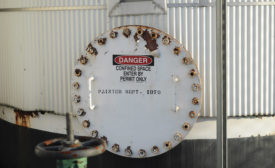Home » OSHA
Articles Tagged with ''OSHA''
Contractors discuss OSHA’s top 10 safety violations
Read More
Securing Your Staff's Safety
Safety training is a must to comply with ever-changing regulations
Read More
OSHA Clarifies Confined Spaces Rule
Q&A shows final rule has limited applicability to the residential HVACR industry
Read More
How to Manage an OSHA Inspection, Part 2
What you’ll need to handle OSHA’s visit: a team and a plan
Read More
OSHA Raises Civil Penalties for Violations
Rates will be raised and adjusted for inflation in the future
July 25, 2016
OSHA Confined Spaces Rule Has Limited Application in Residential HVAC
ACCA reaches agreement with OSHA
July 6, 2016
How to Manage an OSHA Inspection, Part 1
Simple steps to ensure your facility and people are well-prepared
Read More
OSHA Announces New Silica Standard
Potential silica exposures present in tasks that include drilling, cutting concrete and stone
May 9, 2016
Successfully Navigating Workplace Safety Issues in 2016
Companies must monitor changes in federal regulations
Read More
Copyright ©2024. All Rights Reserved BNP Media.
Design, CMS, Hosting & Web Development :: ePublishing












